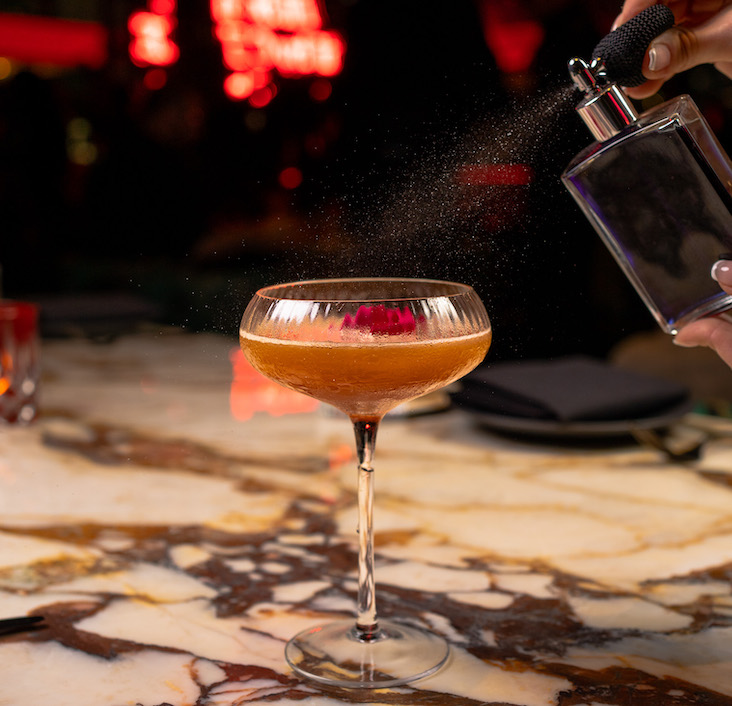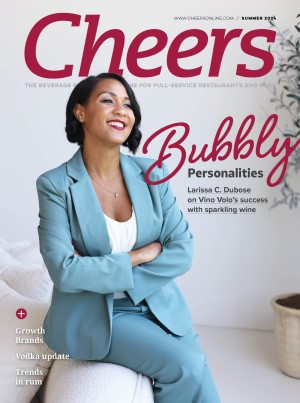Thinking clean, green and fresh has changed the way people eat, dine and shop. It also has impacted what they order in bars—including their alcohol-free choices.
The move to a more chef-like approach on the part of bartenders partly is responsible for the overall shift. But restaurant chains such as Starbucks and Jamba Juice also have played a key role in introducing alcohol-free, mixed beverages to the mainstream. Via mass branding and advertising, they have made the concept popular, profitable and widely available. Drinks have adult flavor profiles and, in many cases, are not laden with sugar.
Tiffany’s Restaurant, a six-unit chain based in Wayne, N.J., has had success with a fresher and less sweet alcohol-free beverage initiative it launched six months ago. The program utilizes all-natural bottled mixers and fruit purées—and is quite lucrative, according to co-owner Michael Romanelli.
Romanelli says many bar and grill guests have traded up from regular soft drinks priced at $2.75 to specialty sodas and alcohol-free cocktails that sell for $4.50 a glass. “It makes sense. People who are health-conscious or are not drinking for some other reason still want to feel they are part of the group,” he says.
Another operator, Katsuya, features a Passion Thyme cocktail made with hand-pressed thyme and passion fruit purées, fresh squeezed lime juice and fresh pressed pineapple juice. These same high quality ingredients also are used in the alcohol segment of the beverage program, says consultant Ryan Magarian, who developed drinks for the three-unit Los Angeles-area concept. “There’s a whole new culture of sophisticated, non-alcoholic specialty drinks that is now emerging.”
The move to healthier, more refreshing ingredients is putting alcohol-free beverages on par with soda and bottled water when it comes to their popularity among non-imbibing consumers. But their flavor profiles are much more intense. At Philadelphia’s Buddakan, a Starr Restaurants concept, the alcohol-free offerings faithfully mirror their spirited counterparts. Morimoto, another Starr concept, with units in New York City and Philadelphia, offers drinks such as the Japanese Pineapple, made with Calpico, pineapple juice and cilantro. The Japanese Pineapple arguably outshines the restaurant’s less virgin cocktails.
Beauty speaks for itself with the zero-proof Blueberry and Mint Smash. The beverage is made with blueberries, mint, basil, muddled lemon, soda and a dash of ginger syrup at the just-opened Club Level in New Orleans. Another head-turner is the Cranberry Nutmeg Shrub, which combines cranberry, lemon, soda water, rice wine vinegar, sugar, water and nutmeg. It is served at Green Zebra in Chicago.
Scott Beattie, author of Artisanal Cocktails (Ten Speed Press) and creator of the bar program at Cyrus in Healdsburg, Calif., believes there is “huge potential” for alcohol-free drinks. Crafting cocktails sans spirits, Beattie and other leading beverage consultants say it is important to think about balancing the drink carefully—especially if the drink is an alcohol-free “copy” of a classic.
“If you’re taking the spirit out, you want to replace it with something that’s going to give a similar mouth feel, taste and aroma,” adds Liz Scott, author of Zero Proof Cocktails, due out in April (also from Ten Speed Press).
Botanical-, root- and herb-flavored or infused waters can work well in place of spirits in a drink. Scott’s Tom Collins’ Cousin, for example, uses spring water infused with crushed juniper berries to replace the gin normally used in a Tom Collins.
In some drinks, the tannic, mouth-puckering qualities
inherent in tea and vinegar can create the dry qualities achieved by using certain spirits. The copycat Bourbon Scott mixes to make her Manhattan-inspired Big Apple Tea is a mix of apple juice, aged and white balsamic vinegars and alcohol-free vanilla extract. She finishes the cocktail with lime juice, maraschino and cranberry juice.
Experts also stress the importance of using top quality tonic waters and sodas. Beattie prefers Fever-Tree’s tonic water, bitter lemon and ginger ale products. Scott likes Italian sodas, which are not too sweet.
Stepping away from copycat drinks toward completely new alcohol-free options can yield interesting results. Arrows in the alcohol-free drink ingredient quiver are many: Fresh squeezed juices, verjuice (unripe wine grape juice), specialty vinegars, extracts (some have a glycerin base and are alcohol-free), essences (rose water, geranium water, orange water, etc.), bitters (Stirrings makes an alcohol-free orange version), syrups and foams.
Most ingredients are familiar to bartenders. But knowing how to use them in sensible alcohol-free drink combinations takes some practice. At Jack Falstaff in San Francisco, bar chef Franc Martinez makes several drinks with Navarro Vineyards’ fresh-squeezed wine grape juices. One of them, the alcohol-free Key Lime Rickey, uses fresh-squeezed lime juice and club soda combined with Navarro’s Gewürtztraminer grape juice.
Other operators like to infuse syrups with multidimensional flavors. Syrups can be infused with herbs, fruit, tea and spices. Essential oils (organic materials that have been distilled into oils) are another easy way to flavor syrups. Beattie warns that a little goes a very long way. It only takes one to three drops of essential oil to flavor three cups of syrup.
The results of practice are worth it. So is getting on board with this emerging beverage trend that has operators in high spirits.
Michele Grayson writes about culinary and menu trends, as well as foodservice, from Chicagoland.
See also:
Chain Drink Re-Think (online only)
Multi-unit operators embrace the benefits of sophisticated alcohol-free offerings.
Soda Savvy (online only)
Creative beverage pros experiment with hand-crafted, artisanal sodas.




